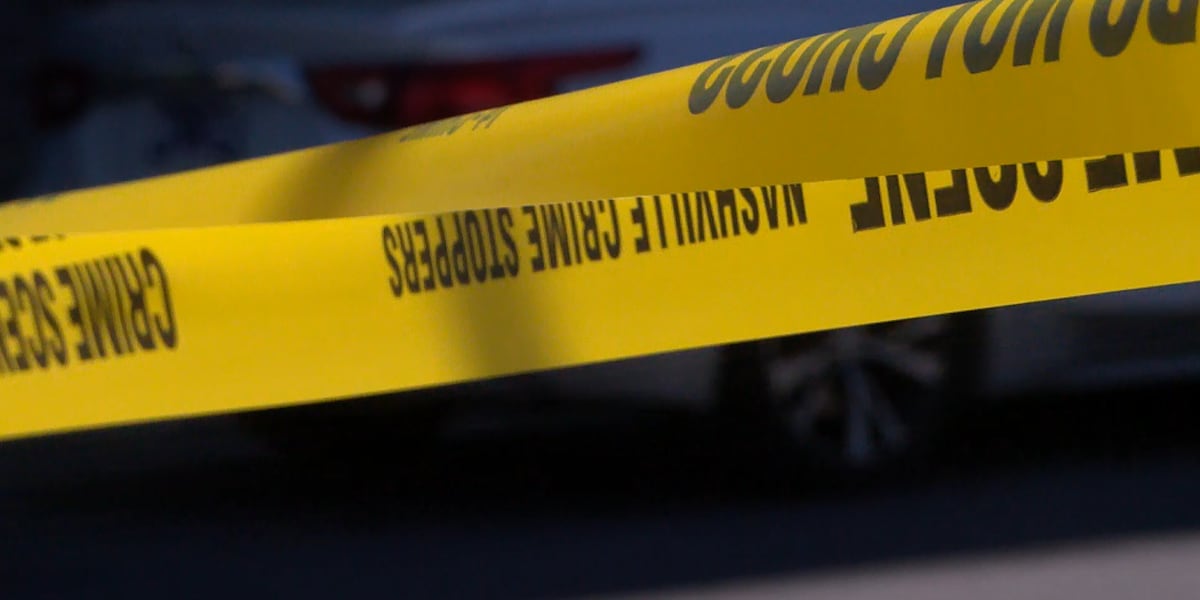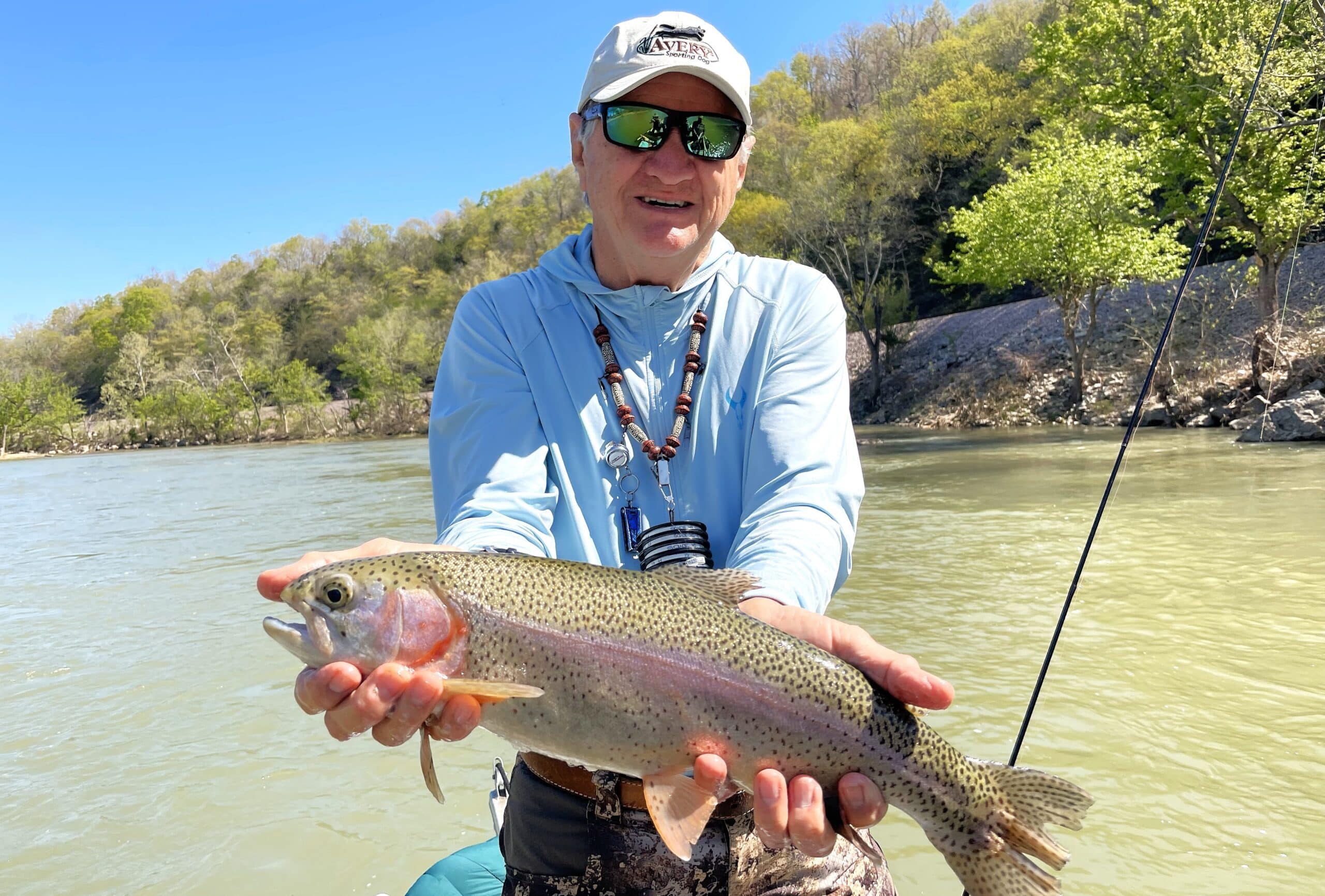Alaska
Royal Caribbean to fix Alaska cruise infrastructure issue – The Points Guy

Ah, scenic Juneau, Alaska — where the allure of lush forests, cascading waterfalls and majestic glaciers draws as many as 16,000 cruise passengers a day. The downside? The constant influx of visitors is putting a strain on local infrastructure.
Royal Caribbean Group — which operates Royal Caribbean International, Celebrity Cruises and Silversea Cruises — has partnered with Alaska Native corporation Goldbelt, Inc., to eliminate the problem of slow, unreliable Wi-Fi in port by bringing Starlink to several public areas and Juneau businesses.
You might think connectivity isn’t a big concern for people visiting the 49th state’s remote, nature-forward capital, which can only be reached by air or sea, but it turns out that isn’t the case. When the port is at maximum capacity, up to six ships can call there in a single day. With that many people in town, public Wi-Fi offered by local businesses is often difficult and frustrating to use for both visitors and locals.
“The number one complaint from this summer was a slow-down of internet speed during busy days downtown,” McHugh Pierre, Goldbelt’s president and CEO, said in a press release. “We are excited to collaborate with Royal Caribbean Group to explore a solution and add satellite internet capacity to town. This project will help locals and visitors have a better internet experience every day of the week.”
Installation began the week of Aug. 26 at the Goldbelt Tram Lower Terminal and will continue north on Franklin Street. The pilot program’s full range will be activated in the coming weeks. As each new hub becomes available, passengers, other visitors and locals will be able to connect for free and stay connected via one seamless network as they move about Juneau’s downtown.
Royal Caribbean isn’t new to Starlink, which was developed by Elon Musk’s SpaceX company. In 2022, the Royal Caribbean family of brands was the first to commit to adding Starlink to its ships for faster connections at sea that allow everything from surfing the internet and checking email to video calling and streaming.

Daily Newsletter
Reward your inbox with the TPG Daily newsletter
Join over 700,000 readers for breaking news, in-depth guides and exclusive deals from TPG’s experts
Cruise terminals where Royal Caribbean home ports its ships also provide connectivity for passengers, but this is the first time a cruise line has outfitted a large part of a downtown port area ashore with Wi-Fi.
“We are constantly striving to find innovative solutions to support our communities and enhance the travel experience for residents and cruise guests alike,” Preston Carnahan, associate vice president of West Coast destinations for Royal Caribbean Group, said. “Our new pilot program aims to alleviate internet congestion and provide additional bandwidth for locals while providing internet connectivity for our guests from ship to shore.”
The line’s statement also stresses the need for user feedback to evaluate the program’s effectiveness and determine whether similar initiatives will be rolled out in other ports.
For years, Juneau’s borough officials have heard complaints that the influx of cruise passengers detracts from everyone’s enjoyment of the city. On June 3, several major cruise lines — including Royal Caribbean, Carnival Cruise Line, Norwegian Cruise Line and others that are members of the Cruise Lines International Association — agreed to limit the total number of ships per day to five and the total number of passengers to 16,000 Sunday through Friday and 12,000 on Saturdays.
Want to learn more about Alaska cruises? Check out our other articles below.

Alaska
Gov. Dunleavy promised a fiscal plan. Alaska lawmakers aren’t so sure.
JUNEAU — On what would have been the 121st day of the first regular session of Alaska’s 34th Legislature, the co-chair of the House Finance Committee was wearing a Hawaiian shirt and piling paperwork into boxes.
Lawmakers had successfully adjourned on Tuesday, a day ahead of the constitutional deadline for the end of the first regular session, surprising even themselves after last year’s session ended one hour after the constitutional deadline.
“Yesterday was odd because we adjourned at 2 in the afternoon, and people started celebrating, but it’s like — ‘Wow, it’s daylight,’” Rep. Andy Josephson, D-Anchorage, said from his office Wednesday.
Lawmakers attributed their efficient passage of the budget and the relatively peaceful end of the session in part to the fact that the House and Senate are led by ideologically aligned majorities — something that hasn’t happened since 2016.
“We meet regularly and pretty much are in agreement. So that’s been one of the greatest things this whole session, I think, is the closeness we‘ve had with the House majority,” said Senate President Gary Stevens.
The broad agreement between the House and Senate — which allowed legislators to pass a budget plan and adjourn around 1:30 p.m. Tuesday — stands in contrast to lawmakers’ deepening divisions with Gov. Mike Dunleavy.
Dunleavy’s discord with the Legislature was in stark relief when lawmakers overrode his veto of an education bill Tuesday morning, just hours before adjourning. It was the first time in more than 15 years that lawmakers had mustered the votes to override a governor’s veto.
The fissure between lawmakers and the executive extends beyond education policy, and it has increasingly been playing out openly in the halls of the Capitol, after several years in which Dunleavy repeatedly vetoed bipartisan bills and budget items and left lawmakers to debate contentious plans to address Alaska’s ongoing fiscal crisis without his involvement.
Now in his seventh and penultimate year as governor, Dunleavy is calling lawmakers to work with his administration on a fiscal plan based on a legislative package that he will introduce in the coming months.
“I’ve said to the Legislature, not just this year, but years past, let’s get together and put together a long-term, sustainable approach to fiscals, sideboards, growing the economy in Alaska, competing with other states for investments, and I’m going to actually put together a package for that in the coming year,” Dunleavy said in a press conference Monday.
Dunleavy did not immediately provide details on what elements his fiscal plan would include. The announcement was met with some skepticism by legislative leaders, who said they wanted assurances from the governor that he would be directly involved in the talks.
“The administration has failed to invest early on, politically and intellectually, in overall fiscal policy,” said Josephson. “As a consequence, we‘re just standing in place.”
Dunleavy has not agreed to an interview with the Daily News, despite dozens of requests, since 2022. He declined another request Wednesday.
Dunleavy’s new call for a fiscal working group comes after lawmakers convened one in 2021 that failed to yield significant legislative changes.
To pay for basic state services that Alaskans have come to expect — like schools, troopers, roads and prisons — and still pay an annual Permanent Fund dividend, would require hundreds of millions of dollars more in dependable annual revenue than the state is currently bringing in, lawmakers have said.
Sen. Lyman Hoffman, a Bethel Democrat who has served in the Legislature for more than 38 years, said in February that Alaska is “probably facing its largest fiscal problem in 30 years.”
In response, the Senate majority took the lead this year in advancing three revenue measures that they say will help begin to address the state‘s structural deficit — one to tax online enterprises, most of which are based outside the state; one to impose corporate income tax on privately held oil companies; and one to reduce the per-barrel oil tax credits. Only the first was adopted by the Legislature this year, while the other two are poised for consideration when lawmakers reconvene in January.
But Dunleavy has said he will oppose those stand-alone revenue measures, despite the fact that his own revenue commissioner told lawmakers in 2021 that he would support those measures as part of a broader fiscal plan. (The governor’s office has since disavowed the commissioner’s statements.)
Leaders in the House and Senate say they are open to hearing what the governor is proposing, but Dunleavy’s ideas — coming in the final year of his governorship — may be too little, too late for lawmakers who have for months been asking Dunleavy to be more involved in their fiscal negotiations.
“This is his legacy at stake,” said Sen. Bill Wielechowski, an Anchorage Democrat who has taken the lead in crafting some of the Senate‘s revenue proposals.
Dunleavy “is on the verge of being, categorically, without question, the worst governor in the history of our state,” Wielechowski added. “If he wants that to be his legacy, that’s his choice. If he wants his legacy to be that he ran on a full PFD and now the PFD is on the verge of disappearing, and he ran as the education governor and now our schools are in shambles, that will be his legacy. It is up to him how he wants to approach the upcoming vetoes and his last year in office.”
Dunleavy began his tenure as governor promising Alaskans that he would deliver statutory dividends by slashing funding for state services. Facing unprecedented pushback, Dunleavy changed tack, calling instead for a fiscal plan predicated on new revenue measures and sideboards on how that revenue could be used.
Dunleavy called several special sessions in 2021 that yielded minimal results. At the time, Dunleavy unveiled a new dividend formula, which he has since abandoned. In 2023, Dunleavy decided against calling lawmakers into a special session amid divisions between the House and Senate leadership.
During his tenure, Dunleavy repeatedly backed off the revenue measures he promised. A plan to create a statewide lottery was abandoned early in his tenure. A statewide sales tax was promised in 2023 but never materialized. A carbon sequestration measure was introduced in 2023, but has not yet yielded the billions of dollars in revenue that Dunleavy initially touted.
Dunleavy began this year by introducing a 10-year plan that projected $12 billion in new state debt by 2035, starting with a $1.5 billion deficit for the coming fiscal year. Asked in December about his vision for balancing the budget in the long term, Dunleavy made no indication that a fiscal plan would be introduced by his administration. Instead, he said he would look to the Legislature for ideas.
In the following months, Senate majority members doubled down on their efforts to both balance the coming year’s budget and to introduce revenue measures that they thought could be palatable to the governor.
“The Senate has been working quite a bit on revenue issues,” said Stevens. “The hope is that as time passes, there‘ll be support for additional revenue that solves a lot of the problems we are facing right now.”
The three revenue measures ultimately introduced in the Senate were taken from a list presented by Dunleavy’s former Revenue Commissioner Lucinda Mahoney in August 2021.
That list included reducing the per-barrel tax credit; requiring all oil and gas companies to pay corporate income tax (eliminating a loophole that exempts Hilcorp from the tax); implementing a statewide sales tax; establishing legalized gambling in Alaska; implementing a tax on businesses that operate online, also called the “internet tax bill”; monetizing carbon offsets; and increasing motor fuel taxes, among other ideas.
“If the Legislature supports these measures, these are revenue measures that the governor supports as well,” Mahoney told lawmakers in August 2021. She resigned a year later, and Dunleavy has since distanced himself from some of the proposals, including the sales tax idea.
Dunleavy spokesperson Jeff Turner said earlier this year in an email that Mahoney “misspoke when she said the governor is willing to introduce a tax credit bill. That was not the governor’s plan.”
That has left lawmakers with limited willingness to take on politically risky revenue proposals — knowing that their efforts could be thwarted by Dunleavy’s veto pen.
“Unless the governor personally gets involved, but more importantly, puts political capital into making some hard choice, the whole thing will be for naught,” House Speaker Bryce Edgmon said Tuesday, shortly after the House adjourned.
Dunleavy on Monday promised to heed lawmakers’ request that he be actively involved in fiscal plan negotiations, but he also made light of the idea that his presence was necessary.
“I’ll be in the room. I’m willing to come in with a package, but there‘s also got to be agreement on sideboards, which is difficult for some folks,” Dunleavy said. Then he added, “I’m not the 61st legislator — Big Daddy, or whatever they want to call somebody — I am an executive. I’ve got a state to run. It’s a big state, so I can’t be here all the time.”
Alaska
Hammered by staffing cuts, Alaska’s national parks brace for millions of visitors

Staffing cuts at Alaska’s national parks will save taxpayer dollars. But also likely to limit land management, visitor experience.
Fat Bear Week lets people vote on their favorite chubby bear
Katmai National Park and Preserve will once again allow people to vote on their favorite chubby bear during the Fat Bear Week, starting October 4th.
Staffing cuts at the National Park Service in Alaska will mean less oversight of wolves, whales, weather and fast-melting glaciers this summer. The cuts raise questions about the experiences that 3.3 million visitors will have in a state that’s home to half of all national park lands as the tourism and cruise-ship season ramps up.
But for now, Fat Bear Week remains safe.
President Donald Trump has been slashing employment across the federal government as he makes good on his campaign promises to shrink bureaucracy and save taxpayer dollars. And Interior Secretary Doug Burgum has given Elon Musk’s DOGE team sweeping powers to cut or reallocate spending at the National Park Service in order to prioritize coal, oil and gas development.
Public lands advocates say the cuts imperil important work both on the frontlines and behind the scenes in managing public lands across the country, including in Alaska, which is home to 60% of all land under park service control.
When Trump took office, park service staffing was already 20% lower than in 2010, even though 2024 was the busiest year for park visitation in history, with 332 million visitors.
Now, a first-of-its-kind analysis shows an estimated 60 staffers from the National Park Service’s regional offices in Alaska have departed under the Trump administration via firings, layoffs retirements and buyouts. The cuts represent about 33% of the regional staffing across Alaska, which is home to 54 million acres of park service land.
Overall National Park Service staffing changes are not publicly available, in part because the federal government exempted itself from regulations requiring private employers to disclose job-cut data.
Alex Johnson, the campaign director for the National Parks Conservation Association’s Arctic and Interior Alaska area said he’s worried the cuts will impact the public’s experience.
For many Americans, a visit to Alaska via a cruise remains a one-in-a-lifetime opportunity. Almost 60% of all tourists to Alaska arrive by cruise ship each year, according to state statistics, many of them traveling through Glacier Bay National Park or Kenai Fjords National Park before taking a scenic bus or train ride to Denali National Park.
“There are so many people who dream of coming to Alaska for that national park experience, to see the bears, to see the glaciers, to see the caribou, and essentially at this point the park service doesn’t have the resources or expertise to maintain those landscapes,” Johnson said.
Impact of staffing cuts
The nonprofit NCPA cross-referenced a list of current employees with last year’s directory to help build the list of departed staff. Those approximately 60 departures do not include staffing reductions in the parks themselves, or regional IT or human resources employees whose positions have been centralized to the Interior Department. An Interior Department spokeswoman declined to comment on the staffing reductions.
The regional office departures include wildlife biologists, historians, fire ecologists, tribal liaisons and interpretive specialists. Also gone: the employee responsible for overseeing the service’s automated weather monitoring stations, which are heavily used by pilots across Alaska to plot safe flights.
The tally also does not include the current vacancies in the top spots of six Alaska national parks.
In Alaska, the National Park Service manages an area larger than the entire state of Utah ‒ from renowned Denali National Park and Kenai Fjords National Park to the nation’s largest national park, the Wrangell-St. Elias National Park and Preserve, which alone is nearly the size of West Virginia.
The NCPA estimates that at least 2,5000 park service employees nationwide have left under Trump, in addition to the approximately 1,000 probationary employees who were summarily fired. Congress is currently debating a federal budget plan that could cut up to $1 billion from the National Park Service.
USA TODAY spoke with multiple park service employees in Alaska to confirm the numbers of departures and the impact those job losses are having.
One regional office staffer in Anchorage said they and their colleagues have been backing up all their data and writing down how they do their jobs. That way, said the staffer, who was granted anonymity because they fear for their job, said they want to ensure park service employees some years down the road will be able to understand the previous work. It’s equivalent, the worker said, to writing your own will.
Short-term approach ‘will have an enormous financial impact on the communities’
Trump has promised to hire a more-than-normal number of seasonal employees to help ensure parks remain open for visitors. But current and former park service staffers who spoke with USA TODAY said those seasonal employees won’t be taking on long-term projects like tracking bears or monitoring receding glaciers.
Earlier this month, five former National Park Service directors, along with multiple other former park service leaders, warned that budget cuts risk violating federal law requiring the park service to protect its properties for future generations. Interior Secretary Doug Burgum has ordered current park service leaders to shift staffing to preserve visitor experiences, like keeping open visitor centers and campgrounds.
“…We fear that these messages will put NPS superintendents in a difficult situation when confronted with decisions necessary to protect the resources of the units of the National Park System,” wrote the former leaders, who served under both Democratic and Republic presidents.
“The crippling of our parks and public lands, and the threat to the future of the National Park System, will have an enormous financial impact on the communities that rely on parks and other public lands that support their economies,” they concluded.
One bright spot is Katmai National Park and Preserve, which appears to have largely been spared significant job losses, several park service experts said.
Park officials confirmed to USA TODAY that they will continue running the wildly popular Fat Bear Week competition livestream, which last year drew 10 million viewers.
The livestream webcams at Katmai’s Brooks Falls area show brown bears ‒ the correct name for grizzlies living in coastal areas ‒ as they gorge on spawning salmon each fall in preparation for winter hibernation.
Alaska
A winter interlude hits northern Alaska

ANCHORAGE, AK (KTUU) – A winter storm warning for heavy snow was issued for the Dalton highway Monday as a winter storm impacts the area.
The warning cautions that 7 to 12 inches of snow could hinder travel on the transportation corridor. The warning will remain in place through 4 p.m. Tuesday. Snow is also likely along the northern portion of the state, even though there are no advisories in effect.
Cloud cover will persist over Alaska with scattered showers. Some convective cells fired up in the interior and a few lightning strikes were noted near Paxson.
Drier conditions and sunny breaks are also a part of the forecast this week.
Southeast Alaska continues to see a chance of showers, as does Southcentral to the Interior Tuesday and Wednesday, but overall, a drier stretch of weather is expected for the state.
Download the free Alaska’s News Source Weather App.
Send us your weather photos and videos here!
24/7 Alaska Weather: Get access to live radar, satellite, weather cameras, current conditions, and the latest weather forecast here. Also available through the Alaska’s News Source streaming app available on Apple TV, Roku, and Amazon Fire TV.
Copyright 2025 Alaska’s News Source. All rights reserved.
-

 Education1 week ago
Education1 week agoHarvard Letter Points to ‘Common Ground’ With Trump Administration
-

 Culture1 week ago
Culture1 week agoBook Review: ‘Original Sin,’ by Jake Tapper and Alex Thompson
-

 News1 week ago
News1 week agoAs Harvard Battles Trump, Its President Will Take a 25% Pay Cut
-

 News1 week ago
News1 week agoAustin Welcomed Elon Musk. Now It’s Weird (in a New Way).
-

 Culture1 week ago
Culture1 week agoBook Review: ‘Death Is Our Business,’ by John Lechner; ‘Putin’s Sledgehammer,’ by Candace Rondeaux
-

 Education1 week ago
Education1 week agoVideo: Opinion | We Study Fascism, and We’re Leaving the U.S.
-

 News1 week ago
News1 week agoMenendez Brothers Resentenced to Life With Parole, Paving Way for Freedom
-

 Politics1 week ago
Politics1 week agoRepublicans say they're 'out of the loop' on Trump's $400M Qatari plane deal
















